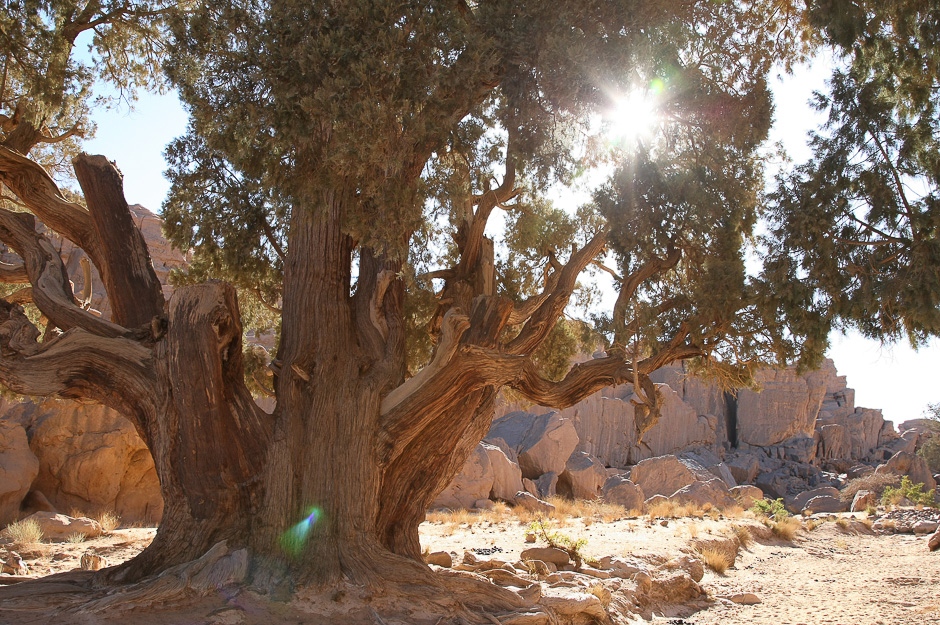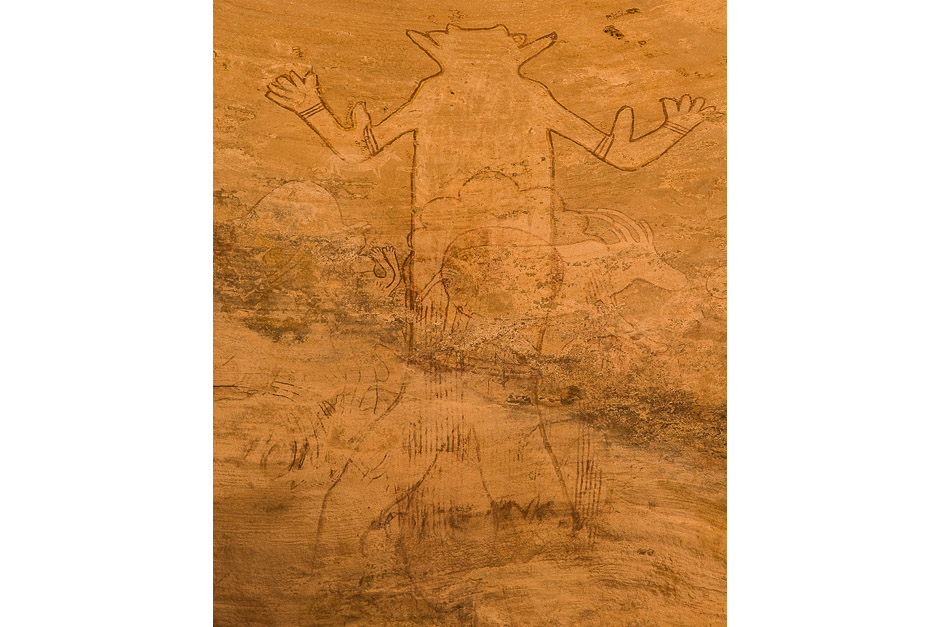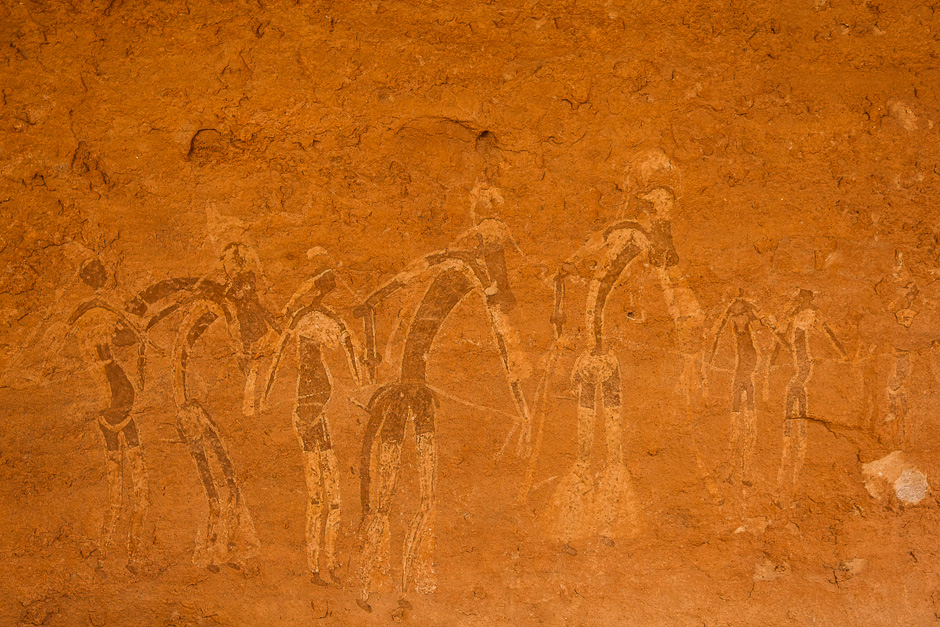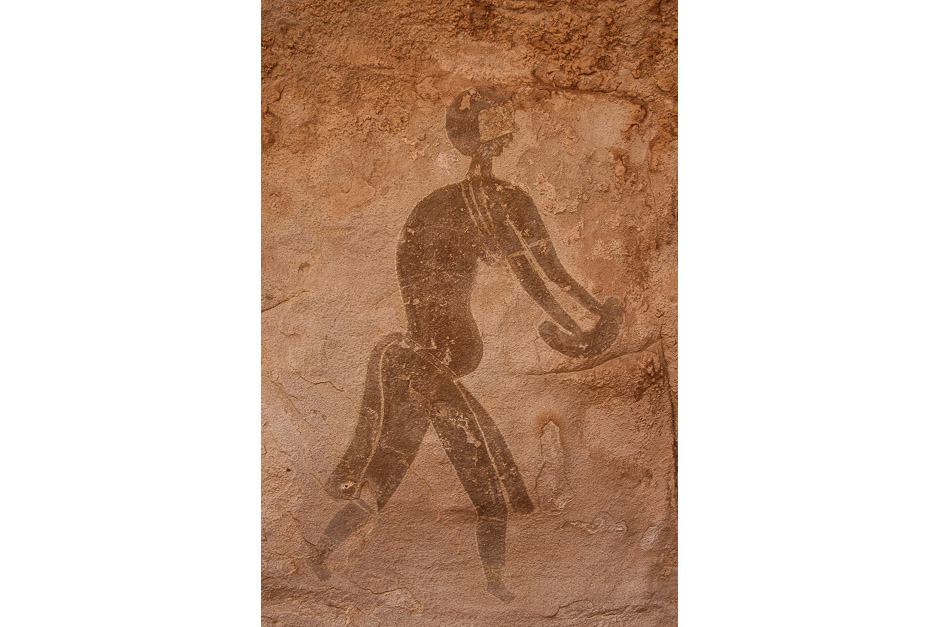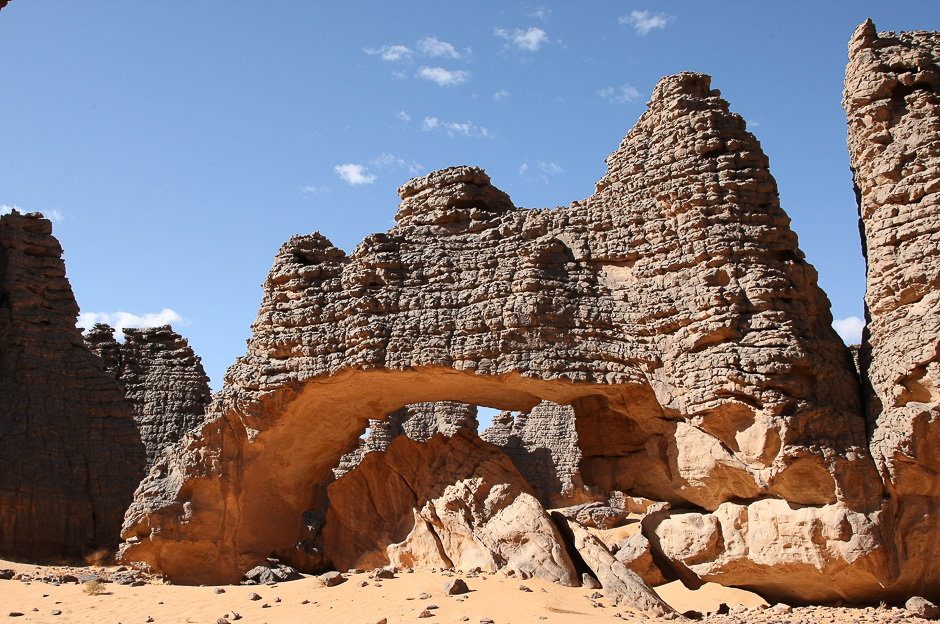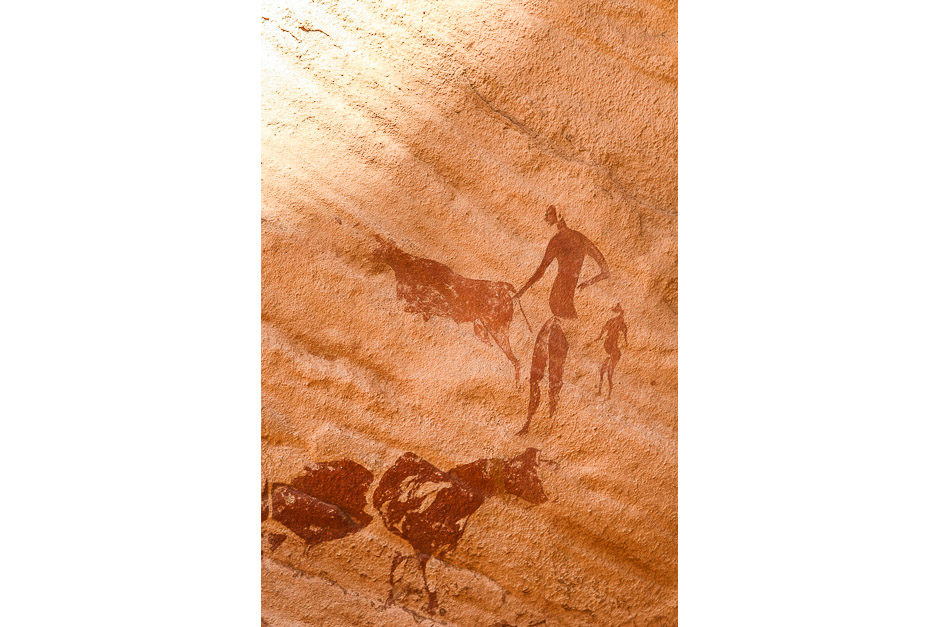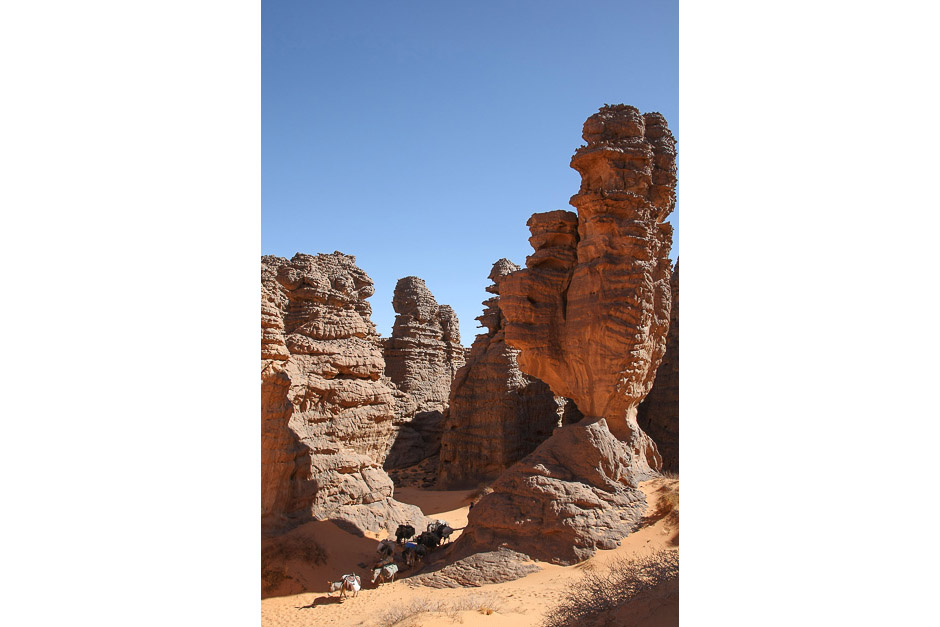About1,500 km south-southeast from Algier to Djanet. Then a half hour by 4WD to arrive at the foot of the plateau. From here, it is necessary to walk steep donkey route to climb up about 700m to arrive on the plateau.
Tassili n’Ajjer means “Plateau with rivers” in the local Tamachek language. Before BC1000, the plateau was abundant with water and it was a crossroad of various peoples. Today, only giant cypress trees, which could have root before the arid period started, are survived. The sand stones are eroded by water and wind and they formed ideal shelters for the various peoples and they left many rock paintings.
アルジェからジャネットまで南南東に約1,500キロ。ジャネットから車で30分ほどで切り立った台地の麓に至る。ここからはロバ道を歩くこととなるが、台地にたどり着くには700mの標高差を登らなければならない。
タッシリ・ナジェールとはタマシェク語で「川の流れる台地」を意味する。紀元前1,000年以前は水の豊かな土地で様々な民族が住み着いていた。現在は、水の豊かな時代に根を張った巨大な糸杉だけが生き残っている。水や風で浸食されやすい砂岩は、根元の部分が大きく抉られている。人が住むのに格好の場所であり、多くの岩面画(自然の岩に描かれた彩画や刻画)が残されている。
In Sahara, humid period and dry period were repeated. Around 8,000BC, the climate was changed from dry to humid. Firstly, black hunting people came from the south and they left many paintings. As the heads are often round with their painting, this period is called as “Period of Round head”. Then, around 5,500BC, a slim black people provably from the area of Nile came with cows. This period is called as “Period of cow”. They left many naturalistic paintings. Around BC3,500, a white people came from the Mediterranean sea side with cow, sheep and goat. They were also painters of naturalist of fine art. There are some trace showing the possibility that they lived in the same area in the same period with the first comers.
Desertification of Sahara started around 2,000BC and it became a complete desert at the present era. Along with desertification, pastoral peoples moved to the south. The rock arts changed to poorly drawn paintings. Domestic animal also changed to horse, then to camel.
サハラは乾燥期と湿潤期を繰り返しており、紀元前8,000年頃には乾燥気候から湿潤気候への変化が始まった。サバンナの動物が群れるようになり、南から来た黒人の狩猟民族がタッシリ・ナジェールの住人となった。彼らは、頭が丸く描かれた絵を多く残していることから、円頭人の時代と呼ばれている。次に紀元前5,500年頃、牛の遊牧をするナイル川流域の細身の黒人たちがやってきた。彼らは非常に繊細な写実的な岩面画を多く残した。牛の時代と呼ばれている。牛の時代の後半、紀元前3,500年頃地中海沿岸に住んでいた白人系の民族が、牛、羊、山羊とともにやってきた。彼らも写実的な絵を得意とし、先着の黒人たちと同じ時代に同じ地域に住んだ痕跡も見られる。
紀元前2000年頃から沙漠化が進み、紀元前後には完全な沙漠となった。沙漠化の進行とともに遊牧民は南下していなくなり、岩面画は稚拙なものに変わるとともに、家畜は牛から馬に、さらには駱駝に変わっていった。



